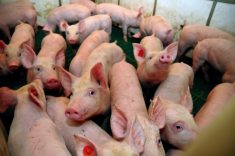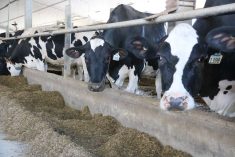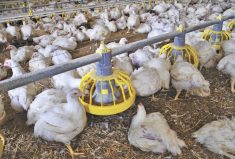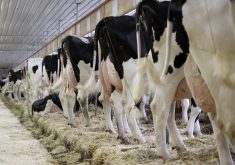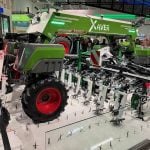Are we there yet?
Every parent has heard that phrase coming from the backseat. Now, as adults, we are asking that question relative to the pandemic.
The end date is unknown, but what can we expect the Ontario livestock sector to look like post-COVID?
I heard once that “life can only be understood backward; but it must be lived forward.” With that in mind, to think about a post-COVID livestock reality, we need to start by looking at where we came from.
Each livestock sector is different with regards to how they were positioned for resilience going into the pandemic, how they adapted to the short-term impacts of COVID-19 and how they will fit into the new world that they will be operating in as we return to some normality.
Read Also

New Iridium technology helps block GPS spoofing
A tiny new chip will allow Iridium’s Positioning, Navigation and Timing (PNT) signals to be received much smaller devices, create a backstop against Global Positioning Systems (GPS) spoofing.
Entering the pandemic, the poultry sector was on a roll with increasing per capita consumption and a decades-long run of gaining strength compared to competing livestock proteins.
Dairy was adjusting to changes brought about through recent trade agreements. Both sectors, through the supply management system, could quickly adjust supply.
The pork and beef sectors were, and are, extremely dependent upon trade. All livestock sectors were susceptible to disease outbreaks with avian influenza, African swine fever and foot and mouth disease of concern due to the devastating impact they would have on Canadian producers.
When COVID hit, livestock supply chains were exposed as more complex and inelastic than many knew. Significant adjustments were required when retail/food service demand profiles changed. Another significant impact in the livestock sector was the pinch points created when workers in processing plants fell ill.
The processing industry has, like most other industries, concentrated in the name of efficiency. A hidden cost of that efficiency has been exposed and will need to be addressed. As Temple Grandin noted about concentration in the processing sector, “Big isn’t bad, it is fragile.”
Looking beyond the pandemic is harder because it seems more likely that COVID will be something we live with rather than something we say goodbye to, which makes the starting point of post-pandemic rather blurry.
Regardless, we can expect a more chaotic world in which trade is disorderly and international relationships are frayed and fluid.
Closer to home, COVID has forced all governments to take actions that only months ago would have been unthinkable. The national deficit for this year is likely to be eight times that of 2009-10 ($55.6 billion) following the economic crash of 2008.
With that as the input, here are three predictions about the post-pandemic livestock industry:
1. Fewer people: Labour availability was already an issue in agriculture and now the impact of worker health is clear. This will mean a shift to more automation throughout the entire system including at the farm level.
2. More collaboration across sectors: The livestock sector is facing several challenges that can’t be tackled by any individual sector including preparation for a multi-species disease emergency, consumer concern about a trusted food supply (a concern heightened during COVID), the prospect of competing with livestock-free products (plant-based meat, eggs and milk) and access to qualified labour.
For example, the cost of a foot and mouth disease (FMD) outbreak in Canada is estimated to be $65 billion, about 10 times our BSE experience. Following the FMD outbreak in the United Kingdom in 2001, we became somewhat serious about preparedness, but we now simply have to develop, and regularly test, a complete, cross-sector plan, one that includes prevention and detection.
3. More accountability: One of the legacies of COVID must be how we care for our seniors. Governments, though strapped by deficits, will have no choice but to deal with senior care. Should an epidemic hit the livestock industry anytime soon, there will be far less appetite, much less the ability, to provide the recovery programs of the past.
Recovery funds from government may well be limited to those sectors and individuals that can demonstrate that they have taken every step possible with regards to disease prevention, detection, and eradication.
My favourite saying is that the best way to know the future is to create it. It won’t be easy, but if industry leaders are creative and collaborative within the reality of the new world, then the future for the Ontario livestock sector will be very bright.
Mike McMorris is chief executive officer of the Livestock Research Innovation Corp. and has more than 30 years’ experience in the livestock sector working for government, producers, and industry organizations. Follow LRIC on Twitter at @LivestockInnov.






